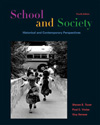Chapter 7 examines ways in which progressive liberal ideology was brought to bear in shaping educational policy for Native Americans in the 1920s through 1940s. This brief history raises questions about modern liberal commitments to cultural pluralism, in which cultural and linguistic differences within a society are valued and maintained, versus a commitment to assimilation, in which the customs, habits, and languages of subcultures are absorbed into a dominant culture. It appears that the history of American Indian education since the late nineteenth century has reflected a commitment to scientific management of Indian acculturation and assimilation by European American administrators. Part of the reason for this has been a fundamental clash between an impulse toward "manifest destiny," tempered by corporate liberal democratic ideology, versus Native American approaches to life that did not emphasize liberal concepts of property, progress, scientific rationality, and nationalism. In its effort to assimilate Native Americans into the dominant ideology and economic life of twentieth-century European America, the federal government turned to formal schooling as its primary agency of reform. To illustrate how well-intentioned liberals sought to acculturate American Indians through scientific management, this chapter reviews the career of John Collier, who was commissioner of Indian affairs from 1933 to 1945. While Collier was a progressive advocate of Indian cultural values, he did not support a genuine cultural pluralism in which Native Americans could exercise self-determination regarding their cultural and educational futures. Instead, he sought to use modern psychology and administrative techniques to bring Indians to value modified forms of assimilation themselves. Collier believed that principles of progressive education could be employed to shape Native American children's attitudes more positively toward the dominant culture. Progressive educator Willard Walcott Beatty further extended Collier's commitment to assimilation through progressive education for Native American children. The Primary Source Readings at the end of the chapter contrast an administrative-progressive view of Native American social policy with Native Americans’ views about their own desire for self-determination and education for cultural pluralism. |



 2002 McGraw-Hill Higher Education
2002 McGraw-Hill Higher Education